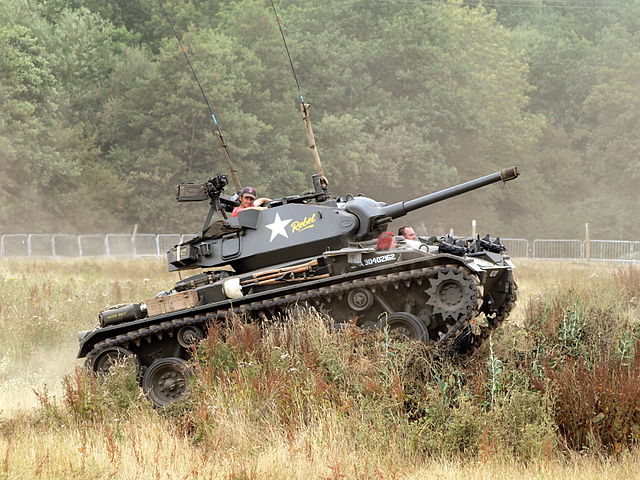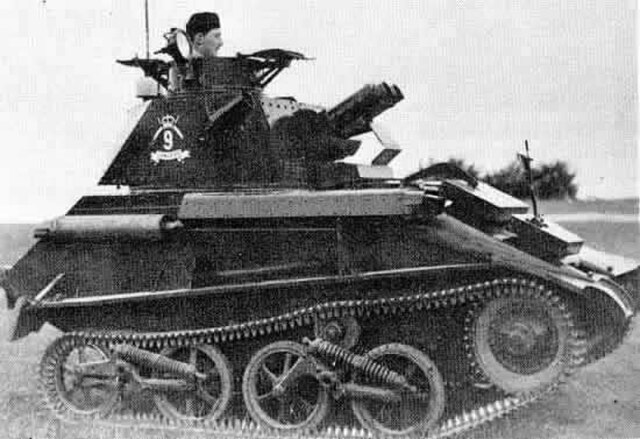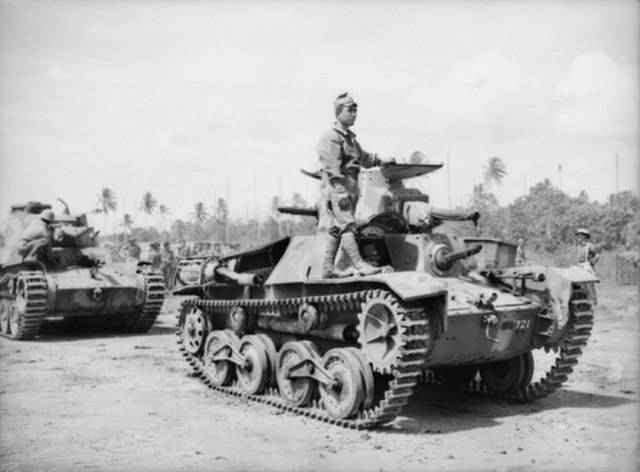The Type 95 Ha-Gō was a light tank used by the Empire of Japan during the Second Sino-Japanese War, at the Battles of Khalkhin Gol against the Soviet Union, and in the Second World War. It proved sufficient against infantry but was not effective against other tanks. Approximately 2,300 were produced, making it the most numerous Japanese armoured fighting vehicle of the Second World War.
Type 95 at the Moscow Museum of the Great Patriotic War
Type 95 light tank Ha-Go Prototype, after the weight reduction modification, 1934
Type 95 light tank Ha-Go 1st Prototype, before the weight reduction modification
Type 4 Ke-Nu light tank
A light tank is a tank variant initially designed for rapid movements in and out of combat, to outmaneuver heavier tanks. It is smaller in size with thinner armor and a less powerful main gun, tailored for better tactical mobility and ease of transport and logistics. They are primarily employed in the screening, armored reconnaissance, skirmishing, artillery observation, and supplementing landing operations in a fire support role of expeditionary forces where larger, heavier tanks are unavailable or have difficulties operating safely or efficiently.
The M24 Chaffee, an American light tank used during the later part of World War II, and several subsequent conflicts
US Army operating Renault FT tanks
British light tank Mk V
Type 95 Ha-Go tanks in New Britain following the Japanese surrender








